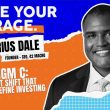by Bill Housey, Senior Portfolio Manager, First Trust Portfolios
Summary notes and conference call replay for “Fixed-Income 2020: The Year of the Sequoia” featuring Senior Portfolio Manager Bill Housey.
• Chairman Jay Powell has indicated the U.S. Federal Reserve will use the full range of its powers forcefully, proactively and aggressively to stabilize the marketplace
• We are in a bear market for equities, despite the bounce we are still in a period of heightened volatility both on the upside and downside
• YTD, the S&P 500 is down 8%, Nasdaq is flat, floating rate bank loans are down 9%, high yield bonds are down 10%
• We believe this is a pricing anomaly as bank loans and high yield have lower risks than equity given their seniority in the capital structure
• Three important variables to consider 1) The Fed 2) Investment Grade fallen angels 3) fundamentals and valuations
• Federal Reserve - 10 programs announced and growing. For the first time ever, they are purchasing high yield bonds specifically they will buy the bonds of fallen angels, those companies that have been downgraded to BB-,BB, BB+, companies that have been downgraded after March 23rd that have been impacted by covid-19
• Fed can buy ETFs in investment grade and high yield. Assuming 10% allocation to High Yield and incorporating leverage, that means $75 to $175 billion can be allocated to High Yield market or roughly 15% of the high yield market
• The Fallen Angel market is ~$130 billion, $84 billion is Ford, Kraft and Occidental. High yield is ~$1.2 trillion, Investment Grade is ~$7 trillion (half of investment grade is BBB). Some of the fallen angels are good companies, some of them are not so good but a downgrade is not a default.
• Empirically the probability of success has gone up. Bonds and loans are just math when you are speaking about equities and commodities those are hope. They either pay or they default, they are contractual arrangements, they have maturities and coupons and not all of these companies will default
• Valuation – Spread is around 800 bps. There has been 57 instances where spreads have crossed 700 basis points, when you review these returns over the next 12 and 24 months when spreads are over 700 bps. The median return was 16% and returns were positive over 80% over that time, over 24 months the median return is 12.9% annualized. Returns were negative in 1 out of 57 instances.
• High Yield is 40% less volatile relative to equity, with a potential return greater than equity. High Yield has been negative 5 years in history.
• Bank Loans has an average price of 0.86, it doesn’t have the same energy and commodities like high yield. It is trading over 900 bps over libor. Bank loans have had two negative years in its entire history.
• This year 6 out of 7 of the worst trading days have occurred this year in March.
• Loans have 55% less volatility than equites. So hypothetically if we are at 0.86 on the dollar with a 800 to 900 basis point spread
• Defaults are going much higher from 2% pre-covid, expected increase to 10 to 12%
• With a spread of 800 and assuming a 40% recovery rate, the market is pricing in a 13% default rate. Bank loan market is pricing in a 47% default rate at 0.86 cents to par and a recovery rate of 40%.
• Default risk can be managed. Important to have active management especially with credit. HYLS has less than 1% of energy exposure, 25% Healthcare and Pharaceuticals, 15% software 12% media, cable companies TV broadcasters. Much more defensive in this environment
• FTSL has had 7 defaults in roughly 7 years since the product was launched, 99 has occurred in the index. Significantly lower default experience. HYLS 7 defaults versus almost 200 in the index in 7 years.
• Incredible opportunity. Bottoms are only known in arrears, when valuations meet your target, it is wise to use discipline to approach these investments and leg in over time it is the only way to confidently enter markets like this
What do I sell to move into Senior Loans and High Yield today?
When it comes to risk assets, a risk for risk swap is most appropriate.An obvious swap would be a dividend equity strategy into either high yield or senior loans. 81 companies have already eliminated dividends entirely. 135 companies have announced a reduction, in terms of dividend suspensions in a calendar year, this is the largest in history. You can de-risk your portfolio, you are taking 45 to 55% less risk by moving into these bonds, and the potential for equity like returns from these valuations
FSL/FSL.A - First Trust Senior Loan ETF (CAD-Hedged)
• Fact Sheet | Holdings
HYLS –First Trust Tactical High Yield ETF
• Fact Sheet | Holdings
Copyright © First Trust Canada












